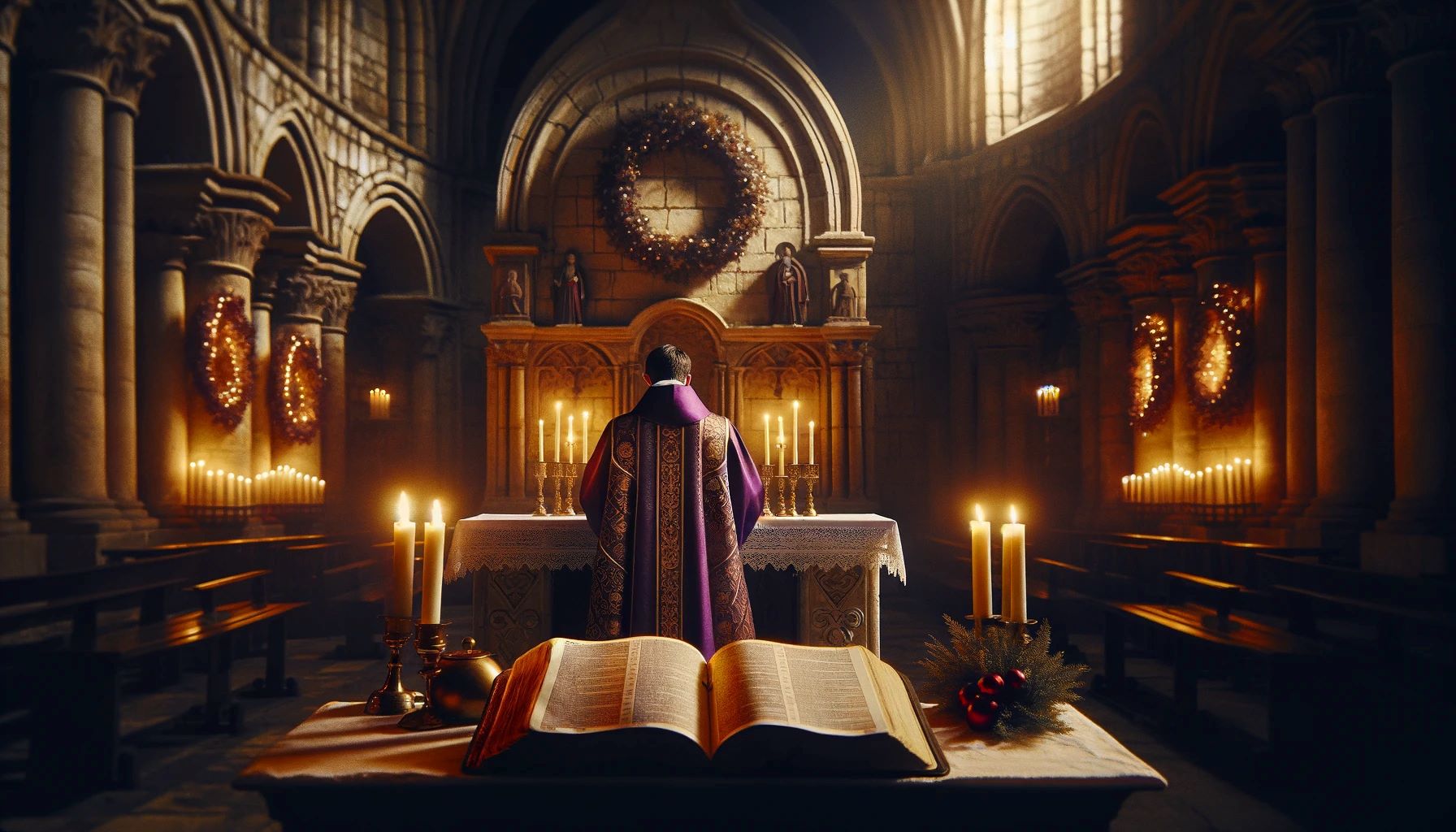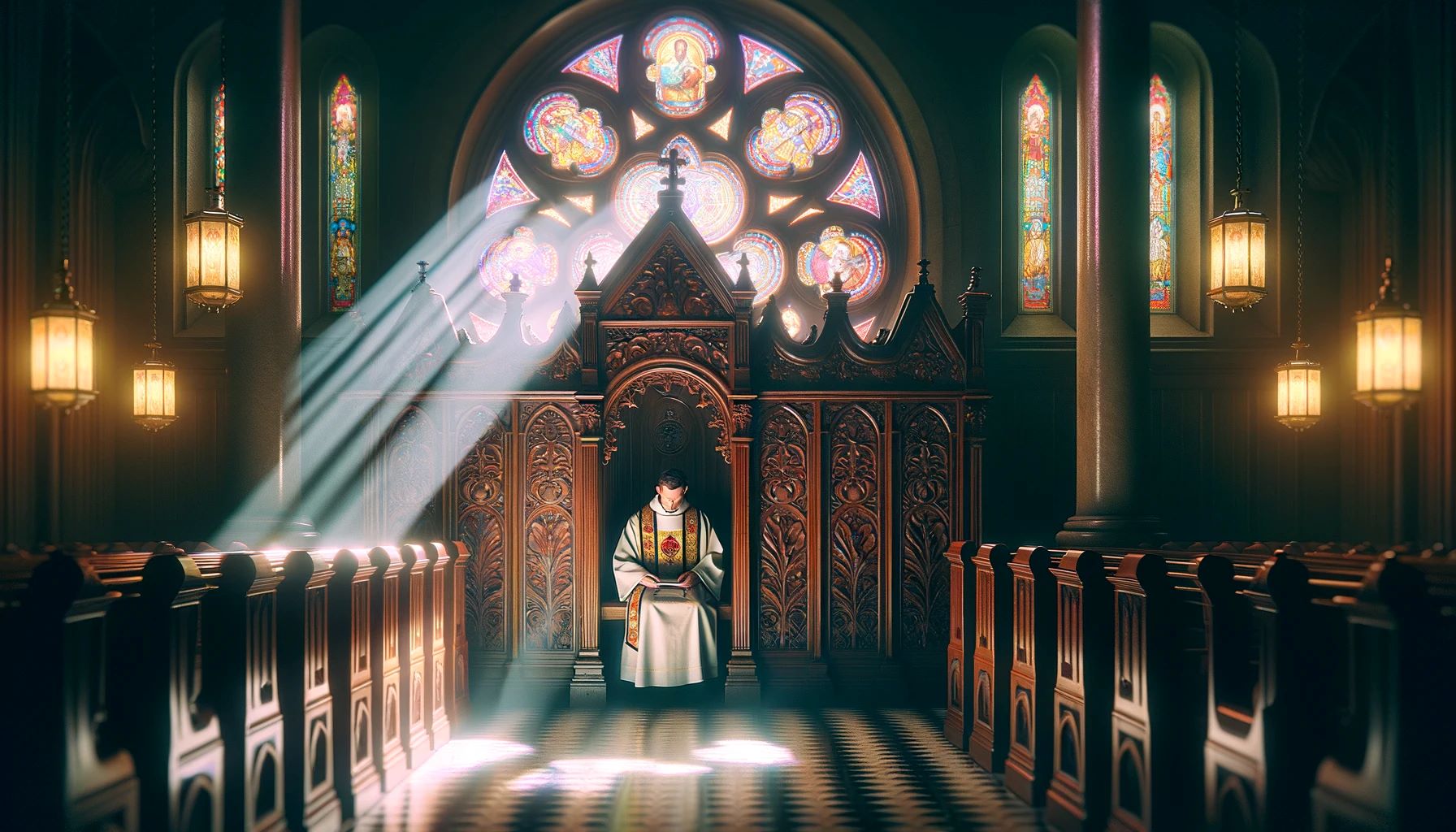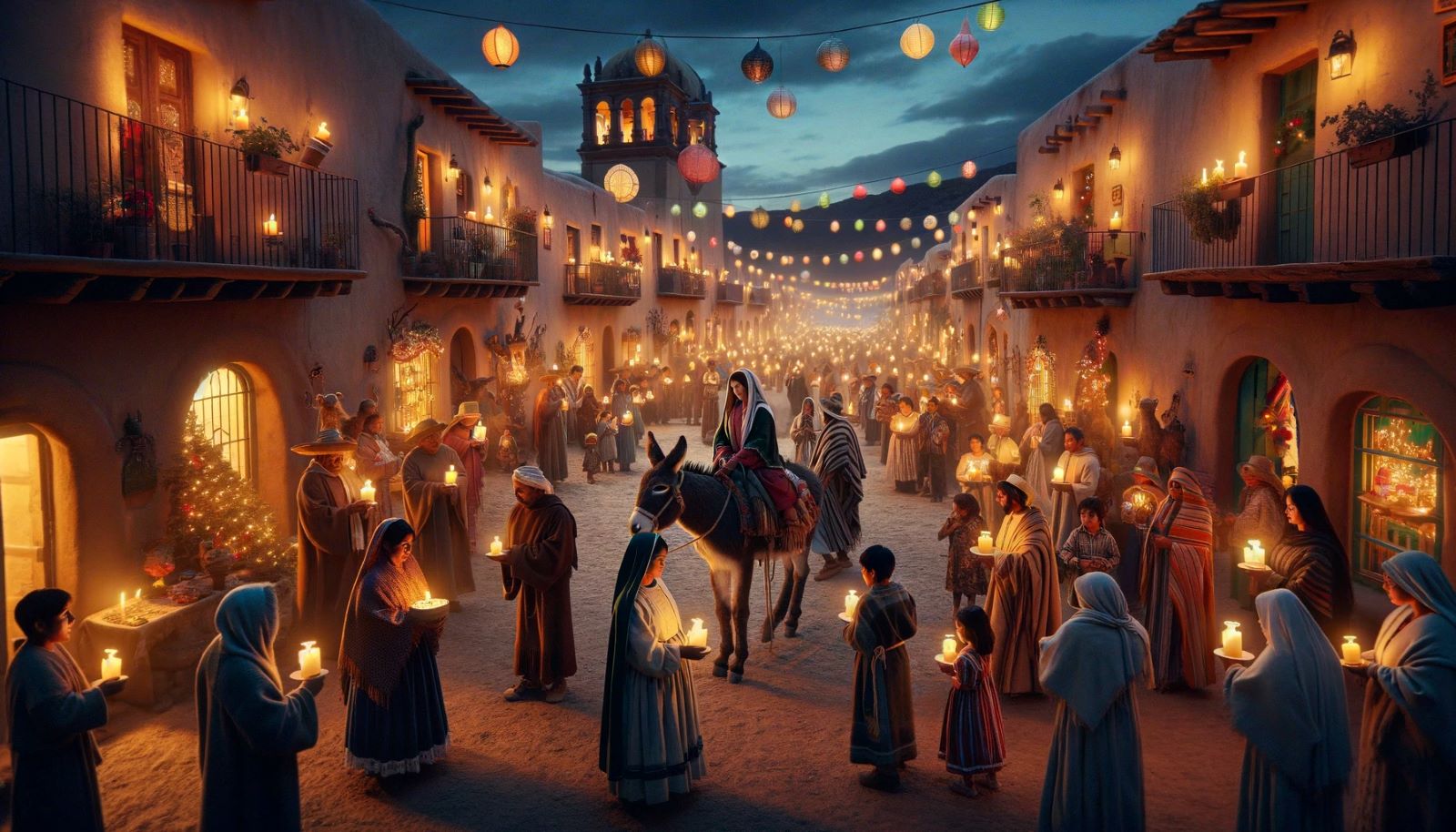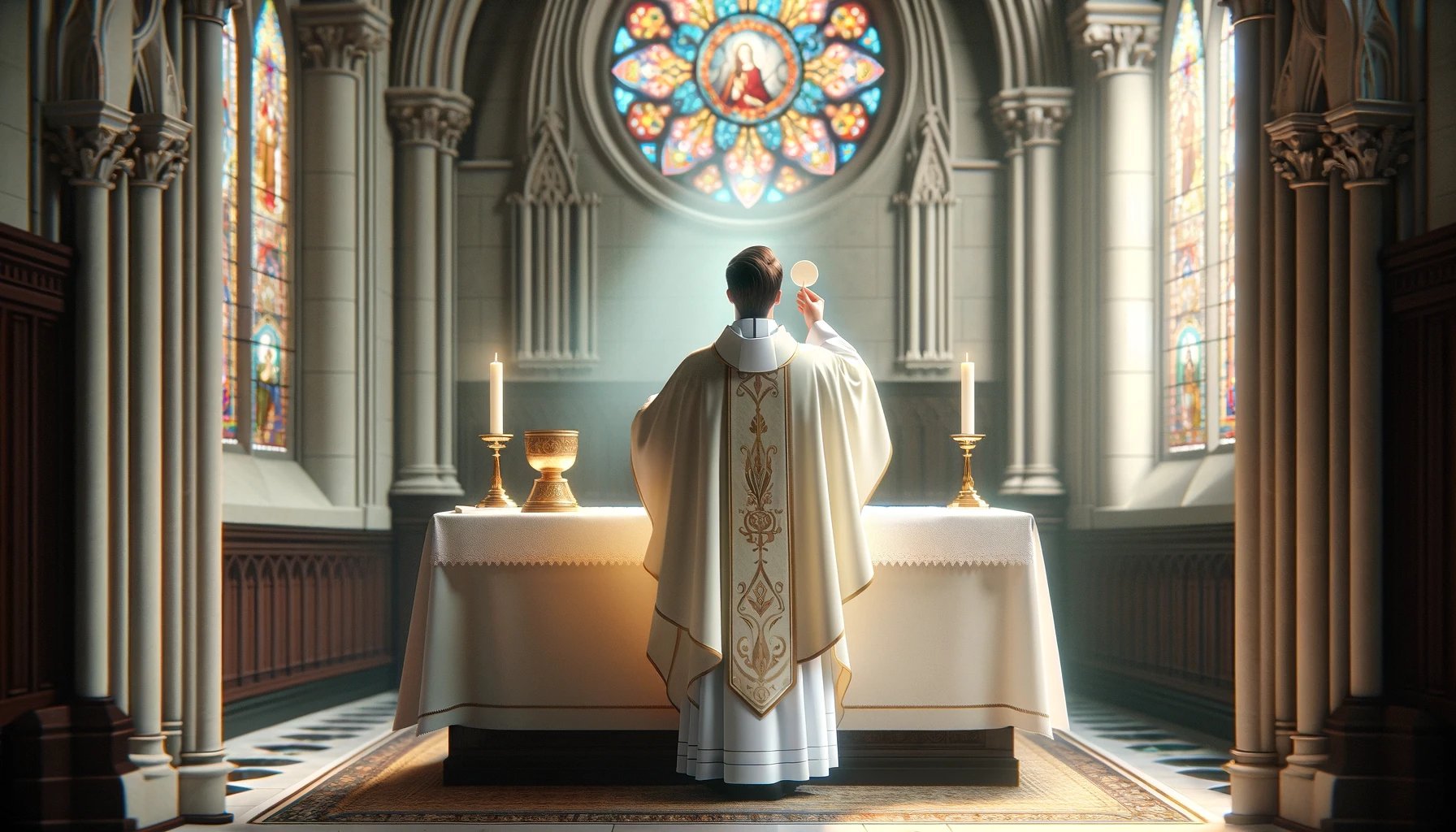Home>Special Themes>What Colors Does The Priest Wear During Advent


Special Themes
What Colors Does The Priest Wear During Advent
Published: February 14, 2024
Jason DeRose, Managing Editor at Christian.net, uses his expertise in religion and journalism to deepen understanding of faith's societal impacts. His editorial leadership, coupled with a strong academic background, enriches the platform’s diverse content, earning him recognition in both journalism and religious circles.
Discover the significance of the colors worn by priests during Advent and other special themes in the liturgical calendar. Learn about the symbolism and traditions.
(Many of the links in this article redirect to a specific reviewed product. Your purchase of these products through affiliate links helps to generate commission for Christian.net, at no extra cost. Learn more)
Table of Contents
Introduction
Advent is a significant period in the liturgical calendar of the Catholic Church. It marks the beginning of the new liturgical year and is a time of joyful anticipation and preparation for the celebration of the birth of Jesus Christ at Christmas. During this sacred season, the church is adorned with symbols of hope, love, joy, and peace, creating a sense of spiritual anticipation and renewal among the faithful.
The observance of Advent dates back to the early centuries of Christianity, with its origins rooted in the Latin word "adventus," meaning "coming" or "arrival." It is a time when believers reflect on the coming of Christ in three distinct ways: the historical coming of Jesus as a baby in Bethlehem, his spiritual presence in the hearts of believers, and his promised return at the end of time.
As the world outside is adorned with festive decorations and twinkling lights, the church takes on a more solemn and reflective atmosphere during Advent. The focus shifts from the external trappings of the holiday season to the spiritual significance of Christ's coming. This period serves as a reminder to believers to prepare their hearts and minds for the coming of the Savior, fostering a sense of spiritual readiness and anticipation.
The observance of Advent is characterized by the lighting of the Advent wreath, a circular arrangement of evergreen branches with four candles, each representing a different aspect of the spiritual preparation: hope, love, joy, and peace. Each week, a new candle is lit, symbolizing the increasing brightness of Christ's coming into the world.
In the Catholic Church, the liturgical colors play a significant role in conveying the mood and theme of each season. The use of specific colors in the church's decorations, vestments, and liturgical furnishings serves as a visual representation of the spiritual journey of the faithful throughout the liturgical year. During Advent, the colors of the church vestments worn by priests hold special significance, reflecting the solemnity and anticipation of the season.
The colors of Advent, along with the symbolism they carry, are deeply intertwined with the spiritual significance of this sacred season. Understanding the meaning behind these colors and their representation in the church's rituals and vestments provides a deeper appreciation for the rich traditions and symbolism of Advent in the Catholic faith.
The Meaning of Advent in the Catholic Church
Advent, in the Catholic Church, holds profound significance as it marks the commencement of the liturgical year and serves as a period of spiritual preparation and anticipation. The word "Advent" originates from the Latin term "adventus," meaning "coming" or "arrival." This season encompasses the four Sundays leading up to Christmas and is a time of reflection on the threefold coming of Christ: his historical birth in Bethlehem, his spiritual presence in the hearts of believers, and his promised return at the end of time.
The observance of Advent dates back to the early centuries of Christianity, signifying a time of expectant waiting and preparation for the celebration of the birth of Jesus Christ. It serves as a reminder to believers to prepare their hearts and minds for the coming of the Savior, fostering a sense of spiritual readiness and anticipation. The liturgical calendar designates Advent as a period of joyful expectation, symbolized by the lighting of the Advent wreath, a circular arrangement of evergreen branches with four candles representing hope, love, joy, and peace.
During Advent, the church shifts its focus from the external trappings of the holiday season to the spiritual significance of Christ's coming. The faithful are encouraged to engage in prayer, reflection, and acts of charity, embracing the virtues of hope, love, joy, and peace. The season of Advent invites believers to prepare for the celebration of the Nativity of Jesus with a spirit of humility and reverence, emphasizing the importance of spiritual readiness amidst the secular festivities.
In the Catholic Church, the observance of Advent is characterized by a sense of solemnity and anticipation, as believers are called to prepare for the coming of Christ with hearts full of hope and joy. The liturgical colors, symbols, and rituals associated with Advent serve as poignant reminders of the spiritual journey of the faithful, fostering a sense of spiritual renewal and anticipation for the celebration of the birth of Jesus Christ.
Understanding the profound meaning of Advent in the Catholic Church provides believers with an opportunity to engage in a period of spiritual preparation, reflection, and anticipation, embracing the timeless traditions and symbolism that enrich the faith journey during this sacred season.
The Colors of Advent
The colors of Advent hold profound symbolism and significance within the liturgical traditions of the Catholic Church. These colors, often displayed in the church's decorations, liturgical vestments, and furnishings, serve as visual representations of the spiritual themes and moods associated with the season of Advent.
-
Purple: Historically, the color purple has been closely associated with penitential seasons in the liturgical calendar, including Advent and Lent. This deep, rich hue symbolizes a sense of solemnity, penance, and preparation. It serves as a reminder for believers to engage in self-reflection, repentance, and spiritual readiness as they anticipate the coming of Christ. The use of purple during Advent underscores the importance of preparing one's heart and soul for the celebration of the birth of Jesus Christ.
-
Blue: In some Christian traditions, the color blue is used as a symbol of hope and anticipation during Advent. This serene and calming hue represents the hopeful expectation of the imminent arrival of the Savior. Blue is often associated with the anticipation of the fulfillment of God's promises and the coming of the long-awaited Messiah. While not as widely used as purple, the use of blue in Advent decorations and vestments conveys a sense of hopeful anticipation and the promise of redemption.
-
Rose or Pink: On the third Sunday of Advent, a shift in the liturgical color palette occurs with the introduction of rose or pink. This delicate and joyful hue symbolizes a brief respite from the solemnity of the season, signifying a moment of rejoicing as the anticipation of Christmas draws nearer. The use of rose or pink on Gaudete Sunday, the Sunday of Joy, serves as a reminder of the imminent arrival of the Savior and the joyful anticipation of the Nativity.
-
White: While white is more commonly associated with the Christmas season, its symbolic significance also extends to the latter part of Advent. White represents purity, light, and joy, serving as a visual expression of the anticipation of the birth of Christ, the Light of the World. As Advent transitions into the Christmas season, the use of white conveys a sense of joyful expectation and the celebration of the arrival of the Savior.
The colors of Advent, with their rich symbolism and spiritual significance, serve as powerful visual reminders of the themes of hope, anticipation, penitence, and joy that define this sacred season in the liturgical calendar of the Catholic Church. Understanding the meanings behind these colors deepens the spiritual experience of Advent, fostering a sense of reverence, anticipation, and joyful expectation as believers prepare to celebrate the birth of Jesus Christ.
The Colors of Vestments Worn by Priests During Advent
During the season of Advent, the vestments worn by priests play a significant role in conveying the spiritual themes and moods associated with this sacred time in the liturgical calendar. The colors of the vestments worn by priests during Advent are deeply rooted in symbolism, reflecting the solemnity, anticipation, and joyful expectation of the faithful as they prepare for the celebration of the birth of Jesus Christ.
Purple Vestments
The predominant color for Advent vestments is purple, a hue that holds profound symbolic significance in the Catholic tradition. The use of purple in the vestments worn by priests during Advent serves as a visual representation of the penitential nature of the season. It symbolizes a spirit of solemn preparation, calling the faithful to engage in self-reflection, repentance, and spiritual readiness as they anticipate the coming of Christ. The deep, rich shade of purple conveys a sense of reverence and introspection, reminding believers of the importance of preparing their hearts and souls for the celebration of the birth of Jesus Christ.
Read more: What Color Does The Priest Wear During Lent
Blue Vestments
In some Christian traditions, the color blue is also used in the vestments worn by priests during Advent. Blue symbolizes hope and anticipation, serving as a visual expression of the joyful expectation of the imminent arrival of the Savior. The serene and calming nature of blue conveys a sense of hopeful anticipation, representing the anticipation of the fulfillment of God's promises and the coming of the long-awaited Messiah. The use of blue in Advent vestments offers a unique perspective, emphasizing the hopeful anticipation and the promise of redemption as believers prepare to celebrate the birth of Jesus Christ.
Rose or Pink Vestments
On the third Sunday of Advent, a shift in the liturgical color palette occurs with the introduction of rose or pink vestments. This delicate and joyful hue symbolizes a moment of rejoicing amidst the solemnity of the season, signifying a brief respite as the anticipation of Christmas draws nearer. The use of rose or pink in the vestments worn by priests on Gaudete Sunday, the Sunday of Joy, serves as a visual reminder of the imminent arrival of the Savior and the joyful anticipation of the Nativity. It offers a glimpse of the joy that awaits as the faithful prepare to celebrate the birth of Jesus Christ.
White Vestments
As Advent transitions into the Christmas season, the use of white vestments becomes more prevalent, symbolizing purity, light, and joy. White conveys a sense of joyful expectation and the celebration of the arrival of the Savior, serving as a visual expression of the anticipation of the birth of Christ, the Light of the World. The use of white in Advent vestments reflects the transition from solemn anticipation to joyful celebration as believers prepare to commemorate the birth of Jesus Christ.
The colors of the vestments worn by priests during Advent, with their rich symbolism and spiritual significance, serve as powerful visual reminders of the themes of hope, anticipation, penitence, and joy that define this sacred season in the liturgical calendar of the Catholic Church. These colors, woven into the fabric of the priestly vestments, deepen the spiritual experience of Advent, fostering a sense of reverence, anticipation, and joyful expectation as believers prepare to celebrate the birth of Jesus Christ.
Conclusion
In conclusion, the colors of Advent and the corresponding vestments worn by priests hold profound symbolic significance within the liturgical traditions of the Catholic Church. The season of Advent, with its themes of hope, anticipation, penitence, and joy, is visually represented through the use of specific colors that convey the spiritual mood and significance of this sacred time in the liturgical calendar.
The deep, rich hues of purple in the church decorations and the vestments worn by priests during Advent symbolize a spirit of solemn preparation, calling the faithful to engage in self-reflection, repentance, and spiritual readiness as they anticipate the coming of Christ. The use of purple serves as a poignant reminder of the importance of preparing one's heart and soul for the celebration of the birth of Jesus Christ.
In some Christian traditions, the inclusion of blue in Advent decorations and vestments offers a unique perspective, emphasizing the hopeful anticipation of the imminent arrival of the Savior. The serene and calming nature of blue conveys a sense of joyful expectation, representing the anticipation of the fulfillment of God's promises and the coming of the long-awaited Messiah.
The introduction of rose or pink on Gaudete Sunday, the Sunday of Joy, provides a moment of rejoicing amidst the solemnity of the season, signifying a brief respite as the anticipation of Christmas draws nearer. The delicate and joyful hue of rose or pink serves as a visual reminder of the imminent arrival of the Savior and the joyful anticipation of the Nativity, offering a glimpse of the joy that awaits as the faithful prepare to celebrate the birth of Jesus Christ.
As Advent transitions into the Christmas season, the use of white in decorations and vestments conveys a sense of purity, light, and joy, symbolizing the joyful expectation and the celebration of the arrival of the Savior. The transition from solemn anticipation to joyful celebration is visually represented through the use of white, reflecting the anticipation of the birth of Christ, the Light of the World.
The colors of Advent, intricately woven into the fabric of the church's decorations and the vestments worn by priests, serve as powerful visual reminders of the spiritual journey of the faithful, fostering a sense of reverence, anticipation, and joyful expectation as believers prepare to celebrate the birth of Jesus Christ. Understanding the meanings behind these colors deepens the spiritual experience of Advent, enriching the faith journey during this sacred season in the liturgical calendar of the Catholic Church.














